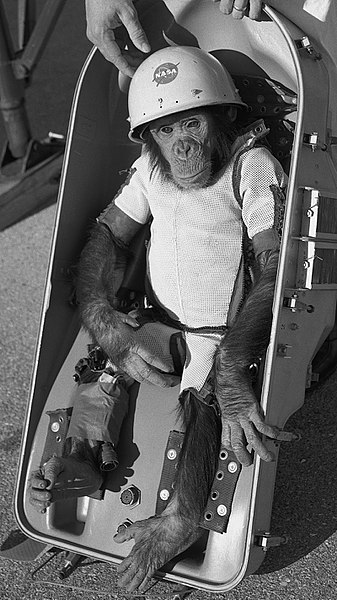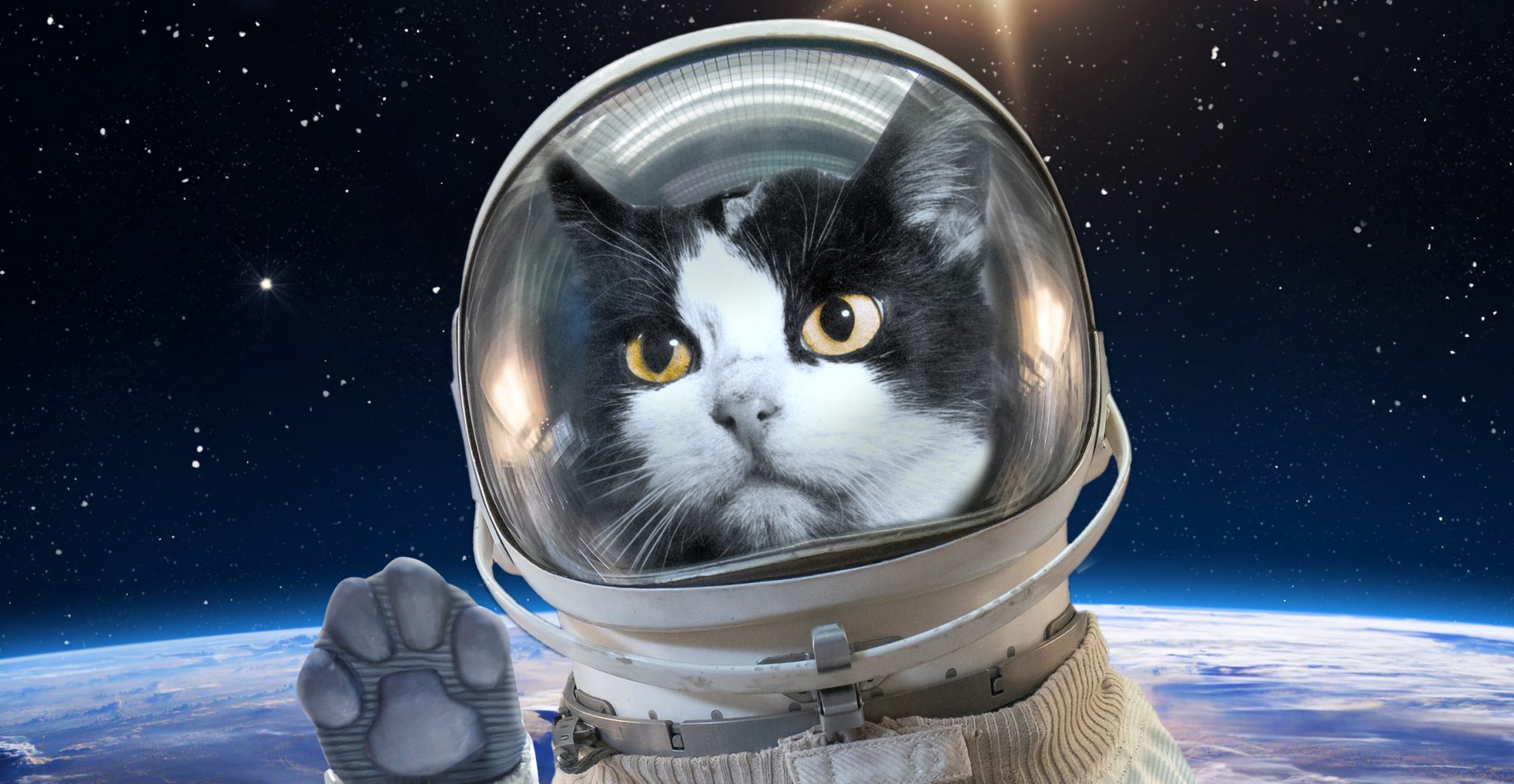The first and only cat in space is finally being honored with a statue all her own. We have all heard of the dogs and monkeys that were sent into space in the 1960s to test the effects of space travel, but few remember Félicette, the only cat sent into space. To change that, Matthew Serge Guy from London, England started a campaign on Kickstarter to raise funds to honor the forgotten French feline.
According to Smithsonian Magazine, Guy was able to raise over fifty thousand dollars from more than a thousand donors to have sculptor Gill Parker design a statue cast in bronze by Sculpture Castings in Basingstoke, United Kingdom. The statue shows Félicette sitting atop a sphere of the earth and looking up to the stars.
The statue is about five feet tall and is housed inside the Pioneer’s Hall at the International Space University in Strasbourg, France along with a memorial to Yuri Gagarin, the first man in space according to Space.com. It was unveiled on the 18th of December 2019, the 25th anniversary of ISU’s Master of Space Studies program, by Lilla Merabet, vice president of the Grand Est region in France; European Space Agency and graduates of ISU astronauts Paolo Nespoli, Helen Sharman, and Reinhold Ewald; and Philippe Jung, chairman of the History Council of the Aeronautical and Astronautical Association.
Félicette has landed! Memorial for first cat in space unveiled in France. https://t.co/JXNJ9ICBMg pic.twitter.com/gv6dVnlQdi
— SPACE.com (@SPACEdotcom) January 24, 2020
Gizmodo reports that Félicette was a small, black and white tuxedo stray found in Paris in October of 1963. The French Centre national d’études spatiales was joining in with the Soviets and the United States in the race for the moon and decided they would send a cat into space. The original candidate, Felix, made an escape on launch day so another stray was found to go up in his place.
That stray was named Félicette, and she was sent one hundred miles into space on a Véronique AG1, a liquid-fueled rocket. Electrodes were placed into her skin so she could be monitored as she rode in a carrier that allowed her head to poke out. She landed fifteen minutes later, fit and healthy. Unfortunately, lasers and microsurgery were still decades away and the only way to study the effects on her was to euthanize her so they could remove the electrodes in the brain for testing, according to Space.com.

Guy believes that the story of Félicette was lost because France ultimately dropped out of the space race deferring instead to the Soviet Union who were the first to put a man into space and safely return him and the United States who were the first to put a man on the Moon.
The space race in the 1960s was full of space experiments using animals. NASA sent Ham, a chimpanzee, into space for Project Mercury. The chimp was taught how to work certain controls inside the spacecraft, and his trip to space took place on January 31, 1961.

The goal was to measure life support systems in zero gravity, and he came home happy and healthy. He was sent to the North Carolina Zoo where he died in 1983 at the age of twenty-five, and his skeleton was preserved and stored at the National Museum of Health and Medicine in Washington D.C.
The Soviets used dogs for their experimental flights. Eleven dogs made the journey between 1957 to 1960. Most were safely returned to Earth, but Laika, a terrier mix who was the first dog ever sent into orbit, didn’t survive the heat shortly after entering orbit, which was an aspect that was expected from the beginning.
The unveiling of Félicette’s statue was only attended by about 100 people. Guy did not want to publicize the event widely, according to Space.com, as he was uncertain if the statue would arrive on time. He is considering doing a second, more publicized, event in October, the fifty-seventh anniversary of Félicette’s trip.
Related Article: Astro-Tortoise: The First Animal to Orbit the Moon
Guy is currently asking those who contributed to the Kickstarter campaign to answer a survey about whether they would be interested in an unveiling open to them and their guests.
